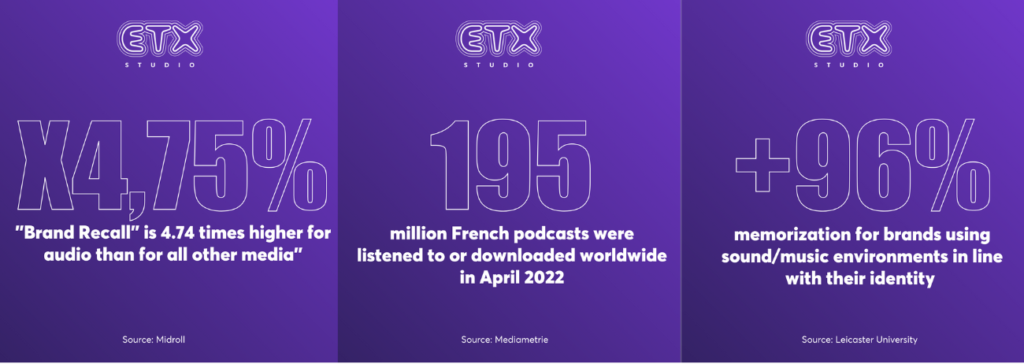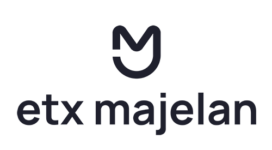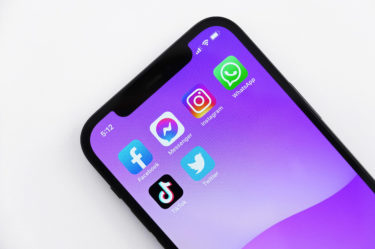The power of audio is huge: it is a mobile media, consumable everywhere, in the car, at home, at the gym, and on any device: smartphone, computer, connected speakers. It saves time and frees the eyes from the omnipresence of screens and digital fatigue. It is estimated that more than 30% of the population learns and memorizes better through hearing (source: Éducscol). One of the reasons for the exponential growth of audio is the increase in the supply of audio content for training and education. Whether through audio training, podcasts, or language learning platforms, Internet users are learning more and more this way, which has already proven its many advantages (such as practicality, its fun aspect, excellent memorization, etc.).
3 key figures on the memorization of audio and the consumption of French podcasts

60% of consumers believe that audio communication is more memorable than visual communication.
Source Getasound PHMG Study 2020
Learning languages through audio: the rise of audio learning
The digital learning market has been growing strongly since the pandemic, “EDTechs (Education Technologies) are growing steadily in a flourishing global market that will have reached more than 98 billion dollars by 2021” (source MC2I).
The educational system that has long favored learning by heart or written instruction is no longer in vogue. Often perceived as boring by the youngest, these teaching methods are being challenged by the rise of social media, gaming, and audio.
Consciously or unconsciously, audio is associated with entertaining and pleasant life moments, such as listening to music or the voices of our favorite tv show or movie characters. This is why audio training is so successful.
One of the most important areas of learning through listening is language learning. The transmission of language by voice is one of the first experiences of knowledge of the human being. In order to learn a new language, it is necessary to go through conversation and listening.
Platforms specialized in this field such as Duolingo or Babbel have understood this. In March 2021, Duolingo launched 100% audio lessons in the form of real-life situations. In doing that, the platform tackles the entire language prism, such as pronunciation, the codes of expression specific to each language, and the culture attached to them.
Audio training through training platforms and podcasts: a challenge for employees and companies
Podcasts are obviously one of the key audio formats for learning and information. According to a study conducted by Consumer Science & Analytics, 83% of French people say they want to learn without having to use a screen while being mobile and having the possibility of doing something else simultaneously. Several companies have therefore relied on this tool to launch themselves into audio training. Among them, Majelan, a podcast platform that offers masterclasses, courses, and audiobooks made by more than 100 experts. Launched in 2020, Tootak is a company that focuses on the creation of audio content for companies and their managers, for more innovative internal communication (customized training or ready-to-use audio content on various topics including management, CSR, etc.).
In the United States, Knowable, a platform specialized in audio courses for professionals, focuses on the most requested topics in the workplace such as marketing, entrepreneurship, sales, personal development, etc. Other American platforms such as Listenable or Lyceum have also joined the audio learning sector.
At ETX Studio, we truly believe in the power of audio, which is why we help brands innovate, transform their internal and external communication (audio training, audio newsletters) and make their entire content catalog available in audio. In addition to creating podcasts, we transform texts into audio content thanks to enriched and continuously improved synthesized voices. You can try our audio augmentation solution for free here.






